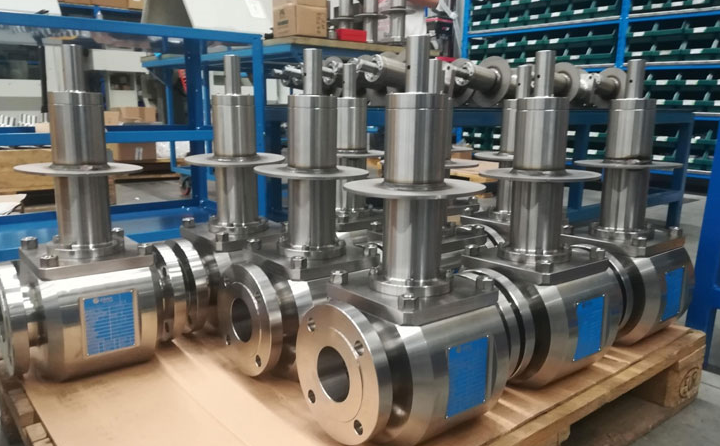
If you’re in the market for a new forged steel cryogenic ball valve, you may be wondering if you can trust the product you’re getting. After all, not all ball valves are created equal, and some of them may be counterfeit. In this blog post, we will teach you how to spot a forged steel cryogenic ball valve, so that you can stay safe and get the best product possible. We also include a guide on how to tell if a ball valve is genuine or not.
What are forged steel cryogenic ball valves?
A forged steel cryogenic ball valve is a type of valve that is used in cryogenic applications. These valves are made from a special type of steel that is able to withstand high temperatures and pressures. This makes them ideal for use in cryogenic systems.
These valves are often used in pipeline applications. They are able to withstand high pressures and temperatures, which makes them ideal for use in cryogenic systems. These systems often use cryogenic liquids or gases, which means that these valves are necessary to ensure the safe operation of these systems.
Forged steel cryogenic ball valves are a popular choice for cryogenic applications because they are able to withstand high pressures and temperatures. This makes them ideal for use in cryogenic systems.
These valves are often used in pipeline applications. They are able to withstand high pressures and temperatures, which makes them ideal for use in cryogenic systems. These systems often use cryogenic liquids or gases, which means that these valves are necessary to ensure the safe operation of these systems.
How to spot a forged steel cryogenic ball valve
There are a few things to look for when examining a forged steel cryogenic ball valve (Figure 1), which can help you determine if it is fake. The first and most obvious sign that a valve may be counterfeit is the lack of quality control. Forged steel valves are often produced in low volumes and have minimal QC testing, meaning that there may be significant inaccuracies in the manufacturing process.
Additionally, the material used to make a forged steel cryogenic ball valve will likely not meet ASTM F138 or ASME B16.3 requirements, both of which are minimum standards for cryogenic valves.
Finally, check for alleged trademarks or logos that do not match those listed on the manufacturer’s website or product packaging.
If you have concerns about a forged steel cryogenic ball valve, it is best to contact the manufacturer for further inspection.
What to do if you find a forged steel cryogenic ball valve
If you find a forged steel cryogenic ball valve, there are several things you can do to verify its authenticity and ensure that it is safe to operate.
First, identify the slight differences in the shape of the valve compared to a genuine ball valve. Forged steel valves usually have more curvature than a genuine valves, and they may also be slightly heavier or smaller in size.
Second, perform a pressure test on the valve using standard testing equipment. A forged steel cryogenic ball valve should only withstand a limited amount of pressure before breaking.
Finally, speak with an expert to confirm whether or not the valve is safe to operate and whether or not it needs to be replaced.
If you have any additional questions about forged steel cryogenic ball valves, please contact our customer service team at 1-800-633-3670. We are happy to help you verify the authenticity and safety of your valve before using it in your application.
How to spot a forgery
How to spot a forgery:
There are a few telltale signs that a steel cryogenic ball valve may be fake. The most obvious sign is that the valve body is not made of high-quality steel. If the body of the valve is made from inferior material, it will not hold its shape under pressure and may have noticeable warping or deformation.
Another suspicious sign is if the valve has been welded or brazed on instead of a machine. A forged steel cryogenic ball valve will often have poor welds or joints where two pieces of metal are joined together.
Finally, look for signs that the valve has been altered in any way. A forged ball valve may have been artificially aged using chemicals or heat, which can create modifications in the metal’s surface texture or color.
If you are unsure whether or not a steel cryogenic ball valve is fake, it is best to consult with a qualified engineer or technician.
What to do if you find a forged steel cryogenic ball valve
If you find a forged steel cryogenic ball valve, there are a few things you can do to ensure the safety of your facility. First, identify the type of valve and whether it is classified as Class I, II, or III. Class I valves are typically used in low-pressure applications while Class II and III valves are used in high-pressure applications.
Additionally, determine the manufacturer and model number of the valve to get more information about its design and construction. Finally, if possible, photograph or video the valve and document any abnormalities or defects before disposing of it.
Conclusion
If you’re in the market for a new cryogenic ball valve, it’s important to be able to identify forged steel valves from quality copies. By looking for specific telltale signs, you can ensure that your investment is worth your time and money. In the end, making sure you get a quality cryogenic ball valve is essential if you want to keep your equipment running smoothly and safely.


